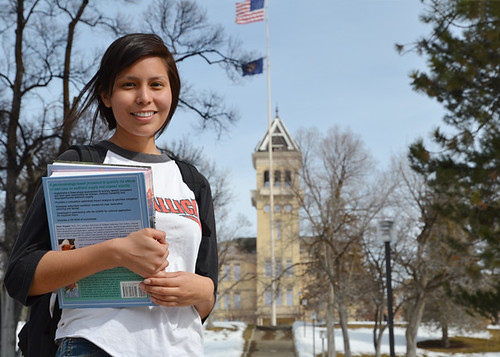
Semira Crank is proud to be part of a growing number of young Navajo women breaking barriers to become scientists and engineers. Her story began in the small southeastern Utah community of Montezuma Creek in what is referred to as the “Utah Strip” portion of the Navajo Nation Reservation.
Crank graduated from Whitehorse High School in 2008 and then earned an associate’s degree from the College of Eastern Utah.
Along the way, two big influences caused her to seek a career as a civil engineer. The first was her “Chei,” or maternal grandfather, who shared with her a love for engineering as a surveyor for the Bureau of Indian Affairs. The second was her father, Loren Crank, Jr., who is a soil conservation technician for USDA’s Natural Resources Conservation Service (NRCS).
Crank’s first job during high school was as a student temporary employee for NRCS working out of the Aneth Chapter House on the Navajo Nation Reservation. For the past two and a half years she has helped NRCS technicians survey land and plan and install conservation practices that help tribal farmers and ranchers improve productivity while also protecting natural resources on their lands.

Crank is now a junior in the College of Engineering at Utah State University in Logan, pursuing her dream of becoming a civil engineer. During her free hours she works at the Logan NRCS office where she assists engineers and conservation planners with the preparation of conservation plans, surveying, entering data and a wide variety of other duties.
She is employed under the Student Career Employment Program, which allows students to work while enrolled in college. Upon completion of his or her degree, each student is offered a job with a government agency with an opening in the student’s field of study.
“I hope to return to the Navajo Nation,” said Crank, “where I can take my degree and experience to improve livestock and water resources on the reservation.” She is already well acquainted with NRCS efforts to provide technical and financial assistance to Native American producers who want to conserve natural resources and improve their livestock and crop operations.
See Semira Crank in action.
Check out more conservation stories on the USDA blog.
Follow NRCS on Twitter.
